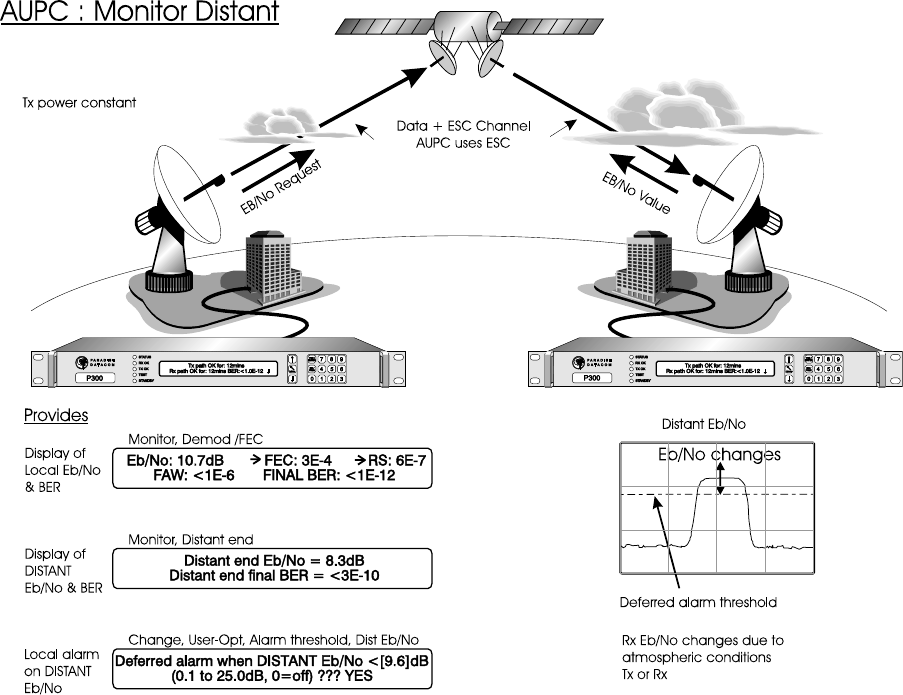
P300H P300 Series Modem Installation and Operating Handbook Page 154
8.11 INTRODUCTION TO AUPC (AUTOMATIC UPLINK POWER CONTROL)
Note: Authorisation from the satellite operator is probably required before AUPC is activated.
8.11.1 Introduction
AUPC provides a mechanism to counteract changes in atmospheric conditions (eg rain), which in turn
affects the attenuation of the atmosphere and can degrade the performance of a satellite link. It does this
by monitoring the distant end Eb/No and automatically adjusting the local Tx power of a satellite link to try
and maintain the specified distant end Eb/No figure.
To be able to monitor the distant Eb/No the local modem needs to be able to interrogate the distant modem
and request the current Eb/No value. It does this by sending messages through the asynchronous ESC
channel (which is carried over the satellite multiplexed with the main data channel). For AUPC to operate
an async ESC channel must be defined, and on the P300 Series this is available in Closed Network (Closed
Net Plus ESC), IBS/SMS and IDR modes.
The AUPC may be set to monitor the distant Eb/No (Mon Dist, shown above) or in its normal mode to
maintain a distant Eb/No (Maint' Eb/No, shown overleaf). In both modes the distant Eb/No and BER
estimate can be displayed on the local end LCD (Monitor, Dist end), a deferred alarm can be set to
activate if the distant Eb/No falls below a user set threshold (Change, User-Opt, Alarm Thresholds,
Distant Eb/No), and the distant end Eb/No can be recorded regularly in the local end traffic log using the
Autolog feature (Change, Log, Autolog). The distant Eb/No can also be output on the uncommitted
analog DAC output if the Monitor / AGC option is fitted (see “uncommitted analog DAC output”, value = 4
in Appendix E starting on page 201)


















